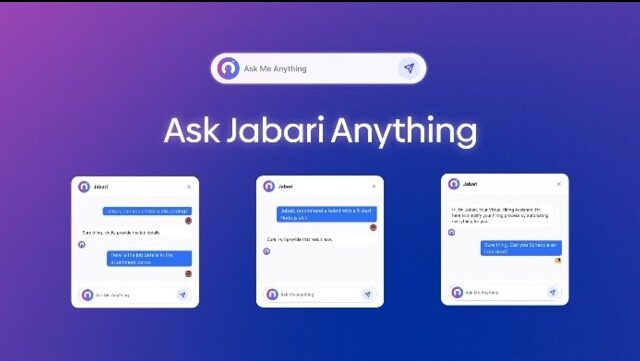Hiring the right talent is important for your company’s growth. Still, many companies continue to make common hiring mistakes that cost them a lot of time and money. So much so that 74% of employers admit to having hired the wrong person at one point or the other. In this article, we’ll examine five common hiring mistakes and provide practical solutions to help you avoid them.
1. Rushing the Hiring Process
When there is an urgent need to fill a role, companies might be tempted to rush the hiring process. While speed may seem necessary, fast hires often result in poor matches. A rushed hiring process may skip steps like thorough screening or structured interviews, resulting in poor matches. Teams subsequently become frustrated by the misalignment, leading to a drop in morale and productivity.
How to Avoid It:
- Create a hiring timeline: Define deadlines for each recruitment stage to avoid last-minute scrambling.
- Use AI-powered tools to automate tasks like candidate screening and interview scheduling, ensuring a smooth process without sacrificing quality.
2. Writing Poor Job Descriptions
According to a 2018 report from Glassdoor, 67% of job seekers find well-written job are more appealing, resulting in higher-quality applications. Therefore, job descriptions that are vague, overly complicated, or lack essential details will have a lasting impact on the recruitment process. It discourages talented candidates from applying, leaving the recruitment team to sift through applications from unqualified candidates.
How to Avoid It:
- Be specific: Use clear job titles and detail key responsibilities. For example, “Customer Success Manager” is more precise than “Manager.”
- Highlight required skills: Differentiate between “must-have” and “nice-to-have” skills.
- Leverage AI: Using tools like job description analyzers can provide market benchmarks, helping you craft descriptions that resonate with job seekers.
3. Ignoring Cultural Fit
Focusing on skills alone while ignoring cultural alignment can lead to internal friction and early employee turnover. Regardless of their skills, a new hire who doesn’t share the company’s values or work style can disrupt existing team dynamics. This leaves many companies spending extra time and resources hiring for the same position.
How to Avoid It:
- Incorporate cultural fit assessments: Ask behavioral questions that reveal a candidate’s values and working style.
- Involve team members: Include potential teammates in the interview process to evaluate fit from different perspectives.
- Use AI-driven platforms: Some tools can measure alignment between candidates’ values and the company’s culture.
4. Using Inadequate Interview Techniques
Structured interviews are twice as effective at predicting job performance compared to unstructured ones. Relying on an unstructured interview process or improvising during interviews results in inconsistent hiring decisions. Without a framework, it becomes even harder to evaluate candidates objectively. Inconsistent interviews lead to biased decisions, which in turn harm diversity efforts. Furthermore, poor interview practices make it harder to assess job performance potential.
How to Avoid It:
- Adopt structured interviews: Prepare standardized questions for every candidate and use scorecards to rate responses.
- Train interviewers: Ensure all interviewers follow the same evaluation criteria to minimize bias.
- Incorporate AI: Use AI tools to assess candidates objectively based on their responses, helping reduce unconscious bias.
5. Failing to Use Data-Driven Tools
Using outdated recruitment methods can leave companies at a disadvantage. Modern hiring requires data to identify trends, evaluate candidate pools, and optimize processes. So, failure to use data-driven tools means companies risk missing out on insights that could improve hiring efficiency. Even worse, manual processes increase the likelihood of hiring delays and candidate drop-offs.
How to Avoid It:
- Adopt AI-powered recruitment tools: Platforms like Loubby AI can streamline processes from sourcing to onboarding.
- Track key metrics: Measure time-to-hire, cost-per-hire, and candidate satisfaction to identify bottlenecks and areas for improvement.
- Automate repetitive tasks: Use chatbots to engage candidates and keep them informed through the process.
How to Avoid These Common Hiring Mistakes
Here’s a quick recap of the mistakes and the solutions to fix them:
- Rushing the hiring process → Create structured timelines and automate tasks with AI tools.
- Poor job descriptions → Use specific, targeted descriptions that attract relevant candidates.
- Ignoring cultural fit → Assess both technical skills and alignment with company values.
- Inadequate interview techniques → Use structured interviews and scorecards for consistent evaluation.
- Failing to use data-driven tools → Leverage AI platforms to streamline recruitment and measure key hiring metrics.
Conclusion
Avoiding these common hiring mistakes is essential for building a strong, motivated team. With the right approach, companies can reduce turnover, save costs, and improve employee satisfaction. AI-powered tools like Loubby AI offer innovative solutions to streamline recruitment, helping you make smarter, data-backed hiring decisions.
Ready to transform your hiring process? Book a demo with Loubby AI to discover how our platform can help you build the perfect team.






